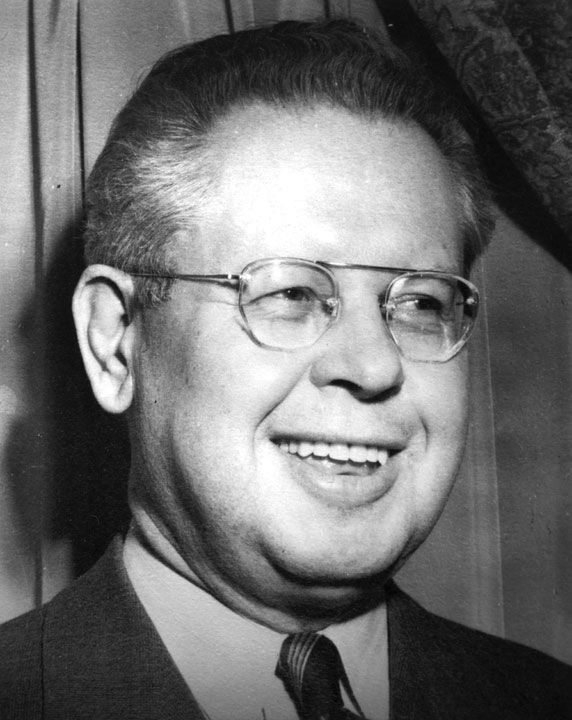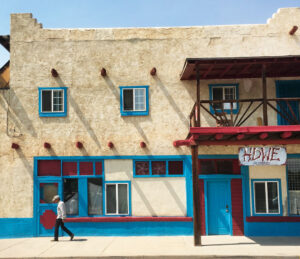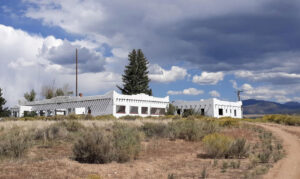By Forrest Whitman
There’s a movement afoot to rename the Russell Office Building in Washington D.C. “The Ralph Carr Senate Office Building.” That would please Colorado’s Japanese-American community and many folks from the San Luis Valley. That’s because Carr stood up for the Japanese folks during World War II. He had roots in the Valley, spoke excellent Spanish, had his law office in Antonito and had deep involvements in La Jara. He was noted for taking irrigation cases from traditional Spanish heritage farmers. His son, Robert, said that involvement sowed the seeds of his later surprising progressive acts.
The imposing limestone and marble Russell Senate Office Building, completed in 1909, is a Washington landmark. Renaming it would be a bit surprising, considering that Colorado Governor Ralph Carr is far from being a well-known figure. The Russell Office Building, on the other hand was named in 1971 for a powerhouse in national politics, U. S. Senator Richard B. Russell Jr.
Russell was well-liked in the senate for working both sides of the aisle. He represented Georgia for forty years and is remembered for keeping many progressive programs on the front burner. Social Security and many other parts of F.D.R’s “New Deal” were attacked as “socialist” by his Republican colleagues, but Russell stood firm. He’s remembered also as responsible for the school lunch program and loan programs to small farmers. He was often thought of as an icon of the “new deal” and a major power in the Democratic Party.
 Russell was also a typical “old south” senator when it came to racial matters. He did have several long-serving key staff members who were African-American and they all spoke highly of him. But, he voted against the Civil Rights Act of 1964. He criticized de-segregation of the public schools, predicting that in the long run, public education would be poorer for both races. Be that as it may, today there is a strong push in the senate to rename the Russell Senate Office Building for Carr. Buildings named for segregationists, or politicians who voted segregationist, are on the chopping block now.
Russell was also a typical “old south” senator when it came to racial matters. He did have several long-serving key staff members who were African-American and they all spoke highly of him. But, he voted against the Civil Rights Act of 1964. He criticized de-segregation of the public schools, predicting that in the long run, public education would be poorer for both races. Be that as it may, today there is a strong push in the senate to rename the Russell Senate Office Building for Carr. Buildings named for segregationists, or politicians who voted segregationist, are on the chopping block now.
Those of us who read a lot of Colorado history are surprised at the pick of Ralph Carr. He served as governor from 1939 until 1943, but is hardly a household name. His legal career sent him many places. He served as county attorney in Conejos County and as Deputy Colorado Attorney General. He managed the Victor Record and Trinidad newspapers for a time and graduated from C.U. Law School. Wherever he went he was thought of as rotund, jolly and a straight shooter.
The Colorado Interstate River Commissioner relied on him for legal advice as the Rio Grande Compact was being negotiated. His arguments helped the Colorado cause of keeping our rivers administrated by the Western states.
Carr was typical of many moderate western Republican governors in that less-polarized era. He went to the 1938 Republican Convention in Denver stating that he wanted to run for no office. He walked out as the nominee for governor. Colorado voters liked this calm understated man representing the San Luis Valley. Actually he grew up in Cripple Creek, but had roots in the Valley. Carr became the first Republican governor in twelve years.
The Great Depression was still going in 1938 and Carr had to cut payrolls and programs. No one liked that. He also pardoned and paroled a record number of inmates, most to the armed forces. Many an editorial lambasted him for that, as well. But of the 97 inmates he paroled to the armed forces only four ran into problems. Suddenly this quiet jovial man was getting noticed. This unassuming man would never have been thought of as standing up to the U.S. government in wartime. Old friends were surprised by him.
Carr has been largely forgotten, but not by the Japanese-American community of Colorado. After Pearl Harbor was bombed by the Japanese on Dec. 7 1941, there was tremendous hatred of Japanese in some circles. 110,000 citizens of Japanese descent were rounded up. No one would accept the detained Japanese-Americans on the West Coast, but Carr did in Colorado. The result was Camp Amache. He went on to say “An American citizen of Japanese descent has the same rights as any other citizen … In Colorado he’ll have full protection.” He also worked to keep Colorado’s Japanese on their vegetable farms and out of relocation jails.
If you walk down the corridor on the first floor of the Colorado State Capitol Building, you’ll see a plaque there. It honors Carr for being “a wise and humane man, not influenced by the hysteria and bigotry directed toward the Japanese-Americans during world War II.” “By his humanitarian efforts no Colorado resident of Japanese-American ancestry was deprived of his basic freedoms and when no others would accept them, the evacuated west coast Japanese, except for confinement in internment camps, Governor Carr opened the doors and welcomed them to Colorado.” “The spirit of his deeds will live in the hearts of all true Americans.”
After serving as governor, Carr lost a bid for the U. S. Senate in 1942 and dropped out of Colorado history. Perhaps that shows that his stance on pro-Japanese rights cost him politically. He lived a quiet life. After his first wife died he remarried. Carr died in 1950.
At first blush, naming an important building for a little known Colorado governor seems unlikely. But, the more I read about Ralph Carr the more I agree with the senators who want the name change. The San Luis Valley can be proud of Ralph Carr.
Forrest spends happy days digging into our history and even when it doesn’t quite repeat itself it usually rhymes.




Hi Mike,
Nice article on Ralph Carr but I take issue with the author’s comment that he, “has been largely forgotten.” This article is, of course evidence to the contrary but so is the new Colorado State court house known as The Ralph Carr Judicial Center. Also, everytime you drive from Salida to Denver on US285 you are driving on the Ralph Carr Memorial HIghway (Kenosha Pass to Morrison).
He may be gone but he definitely is not forgotten